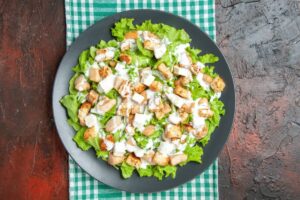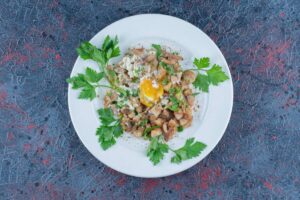The Food & Recipes Blog
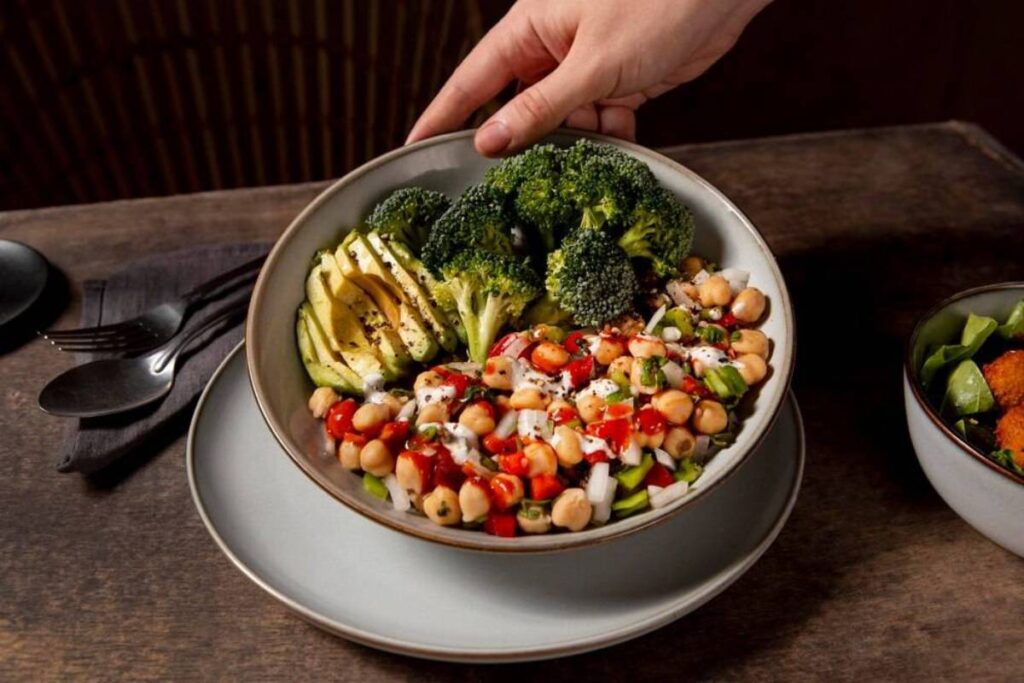
Mediterranean Chickpea Salad with Feta
Some meals arrive with ceremony; others slip into your weekly rhythm almost unnoticed, becoming indispensable through repetition and quiet reliability. This Mediterranean chickpea salad with feta belongs to the latter camp—unassuming at first glance, but layered with intent and far more compelling than its speed or simplicity suggests.
Composed of ingredients often relegated to side dishes—chickpeas, tomato, cucumber—it offers a remarkably complete eating experience. Salty, bright, herbaceous, and substantial, it’s a salad that behaves like a meal, not a placeholder.
The Understated Brilliance of Chickpeas
Chickpeas are often treated as filler, but in reality, they offer an ideal intersection of function and flavour. Firm enough to retain their shape under dressing, mild enough to act as a base for more assertive notes, they lend structure and a pleasingly soft chew. Here, they serve as both anchor and absorbent, taking in the oil, lemon, and garlic with patience and purpose.
The result isn’t just satisfying; it’s sustaining, which is perhaps why so many Mediterranean dishes turn to the chickpea not as garnish, but as foundation.
The Philosophy of the Bowl
What elevates this dish beyond the realm of “quick salad” is its attention to proportion and contrast. Each ingredient—carefully prepared and thoughtfully balanced—plays a role. It’s not a mixture so much as a construction.
- Chickpeas provide substance, quietly anchoring the dish
- Tomatoes and cucumbers introduce water, crunch, and acidity
- Red onion cuts through with sharpness
- Olives offer salinity and depth
- Feta brings fat, creaminess, and counterpoint
- Fresh herbs lift and brighten without overwhelming
- A simple dressing ties it all together without crowding the palate
There’s nothing excessive here—just clarity.
Ingredients (Serves 2 as a main, 4 as a side)
The salad:
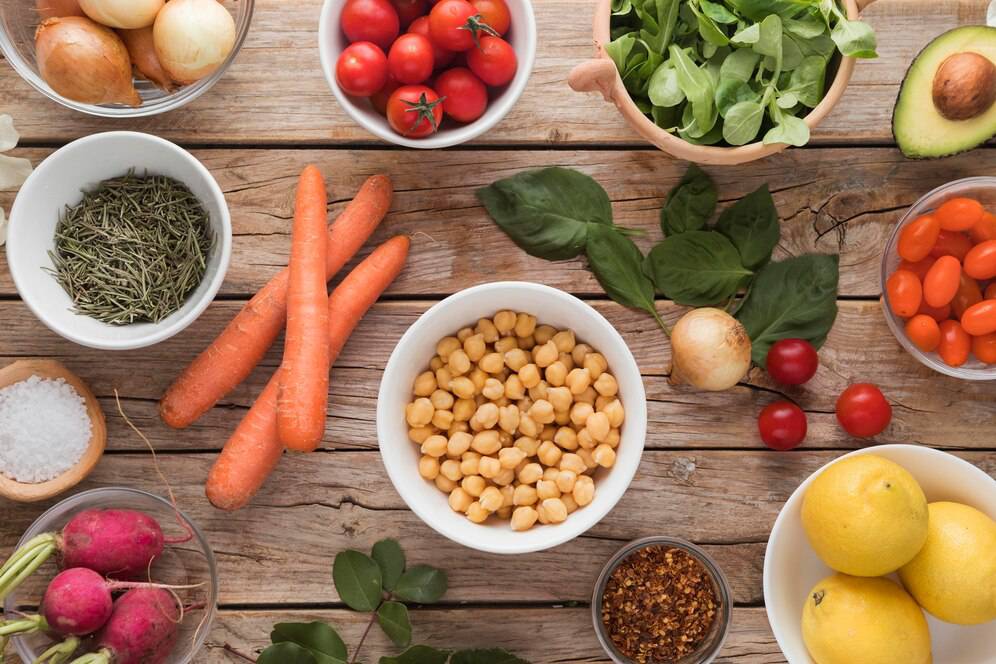
- 1 tin of chickpeas (400g), drained and rinsed
- 150g cherry tomatoes, halved
- ½ a cucumber, diced into small cubes
- ¼ red onion, very thinly sliced
- 10 Kalamata olives, pitted and halved
- 75g feta cheese, crumbled by hand
- A small handful of flat-leaf parsley or mint (or a mix), finely chopped
The dressing:
- 3 tbsp extra virgin olive oil
- Juice of ½ a lemon
- 1 small garlic clove, finely grated
- ½ tsp dried oregano
- Sea salt and cracked black pepper, to taste
Method
1. Compose the salad base: In a large bowl, combine chickpeas, tomatoes, cucumber, red onion, and olives. Toss gently to distribute without bruising the tomatoes or crushing the chickpeas.
2. Build the dressing: In a separate, smaller bowl or jar, whisk together the olive oil, lemon juice, garlic, oregano, and a touch of salt. Taste before adding more—both feta and olives contribute salinity, so restraint here is key.
3. Combine and let it sit: Pour the dressing over the salad and toss again with care. Allow it to rest for five to ten minutes before serving—just enough time for the chickpeas to take on the flavour and the vegetables to soften subtly.
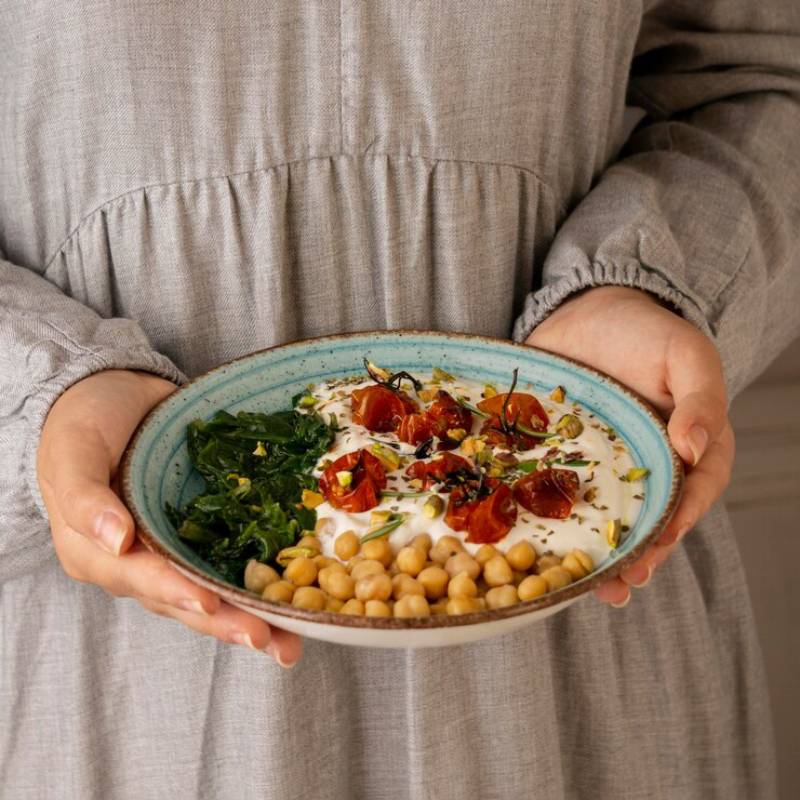
4. Finish and serve: Crumble in the feta just before plating, folding it through gently to avoid breaking it down completely. Top with fresh herbs and, if desired, a last drizzle of olive oil. Serve at room temperature.
Texture, Timing, and Temperature
The success of this dish lies not only in its flavour, but in its mouthfeel and temperature. Serve it too cold, and the olive oil stiffens, the tomatoes mute. Too warm, and the feta turns greasy. Room temperature allows for the full expression of the ingredients—the salt of the cheese, the sweetness of the tomatoes, the richness of the oil.
Likewise, the interplay of texture carries the weight here: crisp cucumber against soft chickpeas; crumbling feta against smooth-skinned tomatoes. It’s this orchestration, rather than any single note, that makes the dish feel whole.
Adjustments and Additions
- If you want more: The salad scales effortlessly. Add grains—bulgur, couscous, or cooked farro—for density, or tuck into a warm flatbread for a more filling experience. Grilled halloumi or hard-boiled eggs will introduce heft for hungrier appetites.
- If you want less: Remove the olives or the onion if you’re looking for something more muted. You could even leave out the feta and double the herbs for a cleaner, dairy-free version.
- If you want contrast: Add a spoonful of capers or a dusting of sumac to tilt the flavour profile toward something sharper and more intense.
Avoid These Missteps
- Overdressing the base: Chickpeas hold dressing well, but excess oil will cause the vegetables to weep and lose their crunch. Start with less than you think you need.
- Neglecting the onion: Raw onion adds dimension, but only when treated properly. A quick soak in cold water reduces its pungency and allows its bite to sharpen, not dominate.
- Adding the feta too soon: Letting feta sit in acid and oil for too long will cause it to lose structure. Add it last, and let its creaminess punctuate rather than blur.
Nutritional Insight (Per Serving – Approximate)
- Calories: 410
- Protein: 16g
- Carbohydrates: 30g
- Fat: 24g
- Fibre: 7g
This chickpea recipe provides protein from both pulses and dairy, substantial fibre from legumes and vegetables, and fat that comes primarily from olive oil and feta. It’s a salad designed to sustain—not merely decorate.
Who This Meal Suits
This is a meal for those who favour integrity over innovation. For cooks who value composition and flavour over flair. It fits into the life of a person who wants to eat well without drama, and who enjoys food that respects the ingredients it’s built from.
It also sits comfortably in a range of contexts. Packed for lunch, served with grilled meat, scooped onto toast—it’s as flexible as it is composed.
Final Thoughts: Restraint and Generosity, Side by Side
What makes this Mediterranean chickpea salad with feta so successful isn’t a groundbreaking ingredient or complex technique. It’s the harmony—the way that each element plays its part without upstaging the rest.
In 15 minutes, you get a bowl of food that is nourishing, flavourful, and gently composed. It doesn’t ask much from the cook, but it rewards attention. And when something this simple tastes this good, it earns its place on the table more than once.



